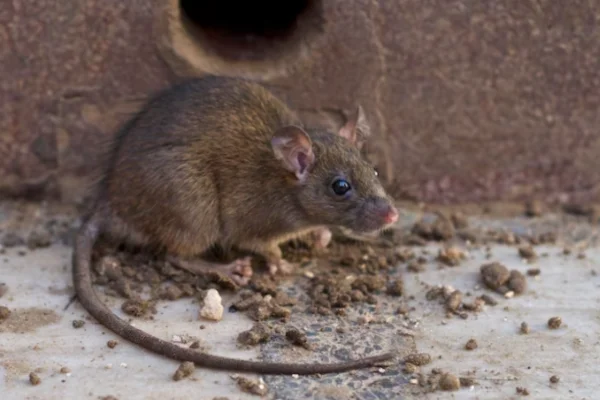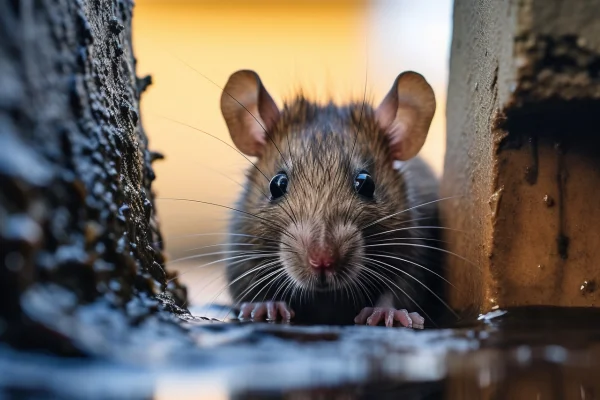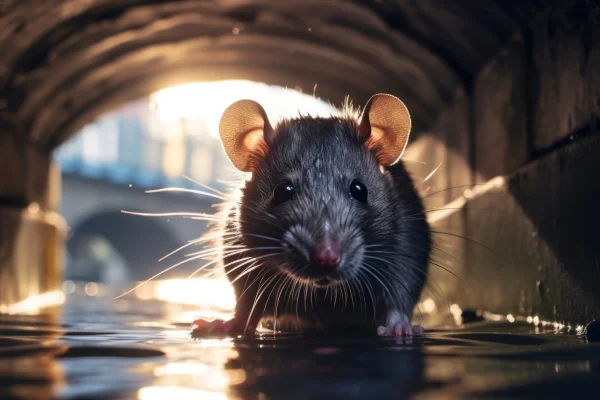How to get rid of rats:
Practical Tips for a Pest-Free Environment
Introduction: How to get rid of rats
Rats can unfortunately become unwelcome visitors to our homes, bringing health risks and damage to property. But before we learn about ways to scare them away, it's essential to understand the risks associated with rat infestation.
Contents
Understanding Rats:
Getting to know Rats: Adaptation and Reproduction Specialists" Rats, small and notoriously adaptable, are known for their incredible ability to adjust to different environments. With their keen senses, these rodents are masters of the art of adaptation, able to detect the slightest movement and sound around them. Their ability to adapt to different environments, combined with a remarkably high reproduction rate, makes rats a highly successful species in urban and rural nature.
Clear Signs of Rat Infestation:
In order to act quickly and effectively, it is essential to recognize the unmistakable signs that indicate the presence of rats. Carefully observing the occurrence of droppings at strategic points, frequent nocturnal noises, as well as gnawed or damaged objects, are all clues to a possible infestation by these rodents.

Repellents to Keep Mice Away
Repelling rats effectively is essential for keeping your home free of these unwanted rodents. There are various repellents available, each with its own effectiveness and application methods.
Essential oils:
- Peppermint: This essential oil has a pleasant aroma for us, but is unpleasant for mice. Apply a few drops to cotton balls and place in areas where mice can enter.
Ultrasonic repellents:
- Electronic Devices: These devices emit high-frequency sound waves that are unpleasant for rats but inaudible to humans. Place them in strategic areas to scare away rodents.
Cayenne pepper:
- Chili powder: Cayenne pepper or black pepper powder can be an effective natural repellent. Spread it in areas where mice often pass.
Other measures
Traps and baits:
- Humanitarian traps: Traps that catch the rats without causing damage may be an option. Look for traps that allow rodents to be released in safe areas after capture.
- Poisonous baits (with caution): If you choose poison baits, use with extreme caution, especially in homes with pets or children. Make sure you follow the instructions for use carefully.
Sealing and cleaning:
- Sealing Entrances: Close any opening or gap that could be a gateway for mice.
- Regular cleaning: Keeping the house clean, eliminating food and water accessible to rats, helps to reduce the attractiveness of the environment for these rodents.
Using a combination of repellents and preventative measures can be the key to keeping rats away effectively and keeping your space free of these unwanted intruders.

Professional Extermination
In more serious cases, it is necessary to seek the help of pest control specialists. They have the right knowledge and tools for effective removal.
Environmental Impact of Control Measures
Rat control not only affects rodents, but also has significant repercussions on the environment around us. It is crucial to consider the environmental impact of the pest control strategies adopted.
Use of Chemical Products:
- Pesticides and poisons: Excessive use of pesticides can contaminate soil and water, negatively affecting biodiversity and local ecosystems.
Impact on Non-Target Fauna:
- Risks to Other Animals: Chemicals used to control rats can affect other non-target species, such as birds, insects and small mammals.
Ecological methods:
- Sustainable Approaches: Opting for more environmentally friendly rat control methods, such as humane traps or natural repellents, reduces the adverse impact on the environment.
Responsible Disposal:
- Waste Management: Properly disposing of the packaging of chemicals and materials used in rat control prevents environmental pollution.
Health Risks for Humans and Pets
Rats are not just a nuisance, they also carry various health risks for both humans and pets. These rodents can transmit dangerous diseases through their urine, feces, saliva and bites.
Rat-related diseases
- Leptospirosis: A serious bacterial infection that can affect the kidneys and liver, transmitted by contact with rat urine.
- Rat bite fever: Transmitted through the bite or scratch of an infected rat, this disease can cause fever, headache and, in severe cases, neurological complications.
- Hantavirus: A serious respiratory infection that can be transmitted by inhaling particles of feces, urine or saliva from infected rats.
- Salmonellosis: Transmitted through contact with food or water contaminated with the feces of infected rats, it can cause severe gastrointestinal symptoms.
- Bubonic Plague: Although it is rare these days, it is still possible to contract this serious disease through the bite of fleas that infest infected rats.
- Allergens: Rat saliva, urine and feces contain allergens that can trigger allergic reactions in some people and pets.
It is important to act quickly when identifying signs of rat infestation in order to minimize health risks. In addition to the control measures discussed above, it is essential to seek medical attention if there is any suspicion of exposure to diseases transmitted by these rodents.

Types of Rats Common in homes.
Common Rat (Rattus norvegicus):
- Also known as the sewer rat or gray rat, it is a common species in urban areas. They generally have a robust body, grayish fur and a shorter tail. They are adept at living in places with human presence, frequenting sewers, basements and garbage areas.
Roof rat (Rattus rattus):
- Known as the black rat or roof rat, it is agile and an excellent climber. It has more arboreal habits, living in attics, trees or high structures. It has a dark coat and a long tail, which is longer than its body.
Mouse (Mus musculus):
- Smaller in size than common rats, the mouse is often found in urban environments. It has a small body, relatively large ears in proportion to its body and a thin, long tail. They are agile and adapt easily to small spaces.
Rat (Oryzomys spp.):
- In some regions, rats are also common. They have similar habits to common rats and are generally found in more rural areas or areas with more vegetation, although they can also be seen in urban centers.
Conclusion: How to get rid of rats?
In short, the question of "How to scare away rats?" involves a variety of strategies, from simple preventative methods to seeking professional help. Understanding the habits of rats, choosing suitable methods and maintaining a clean environment are crucial steps in keeping your home free of these unwanted rodents.
Thank you for taking the time to view our other work:
https://vettopbr.com/animais-mais-venenosos/








